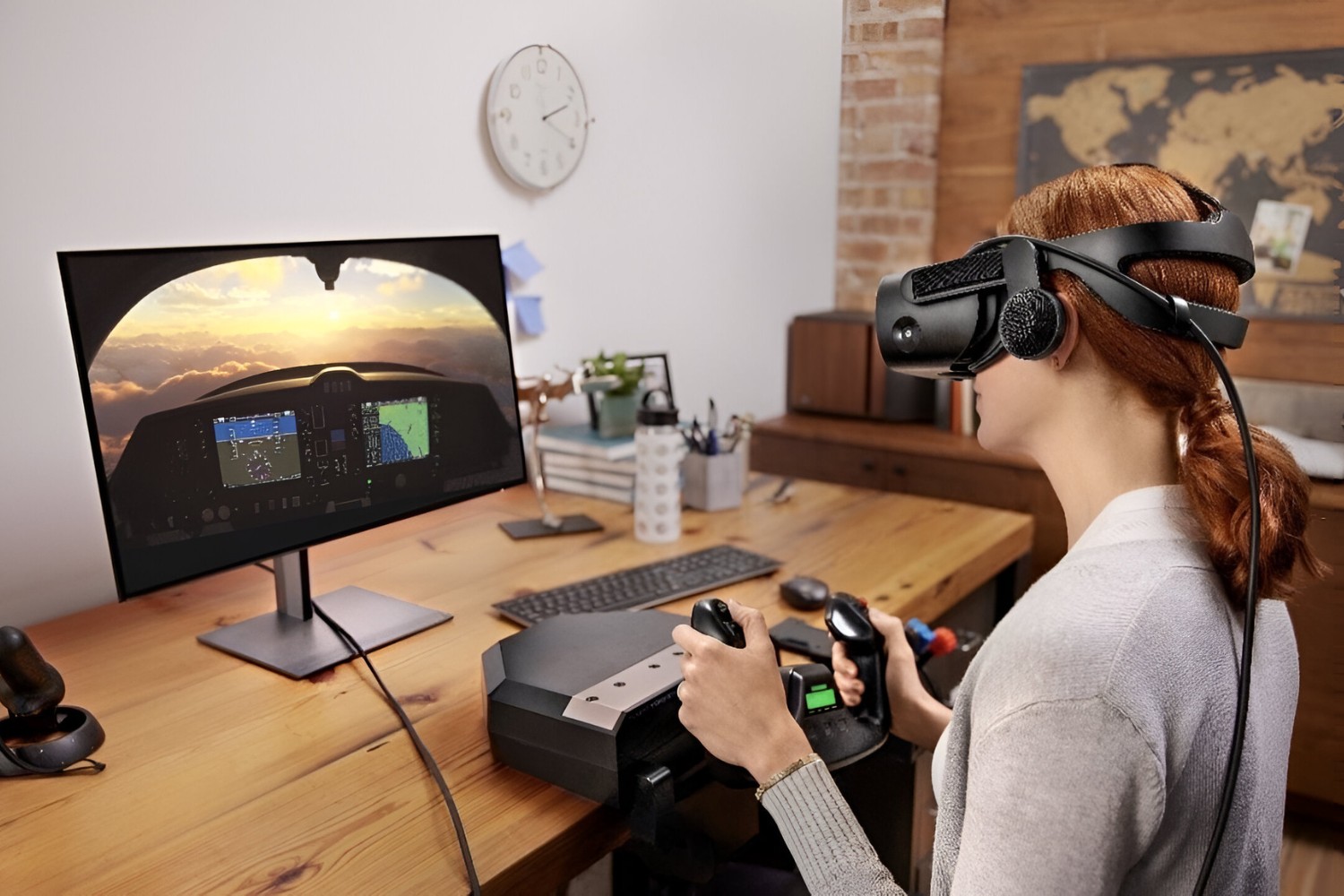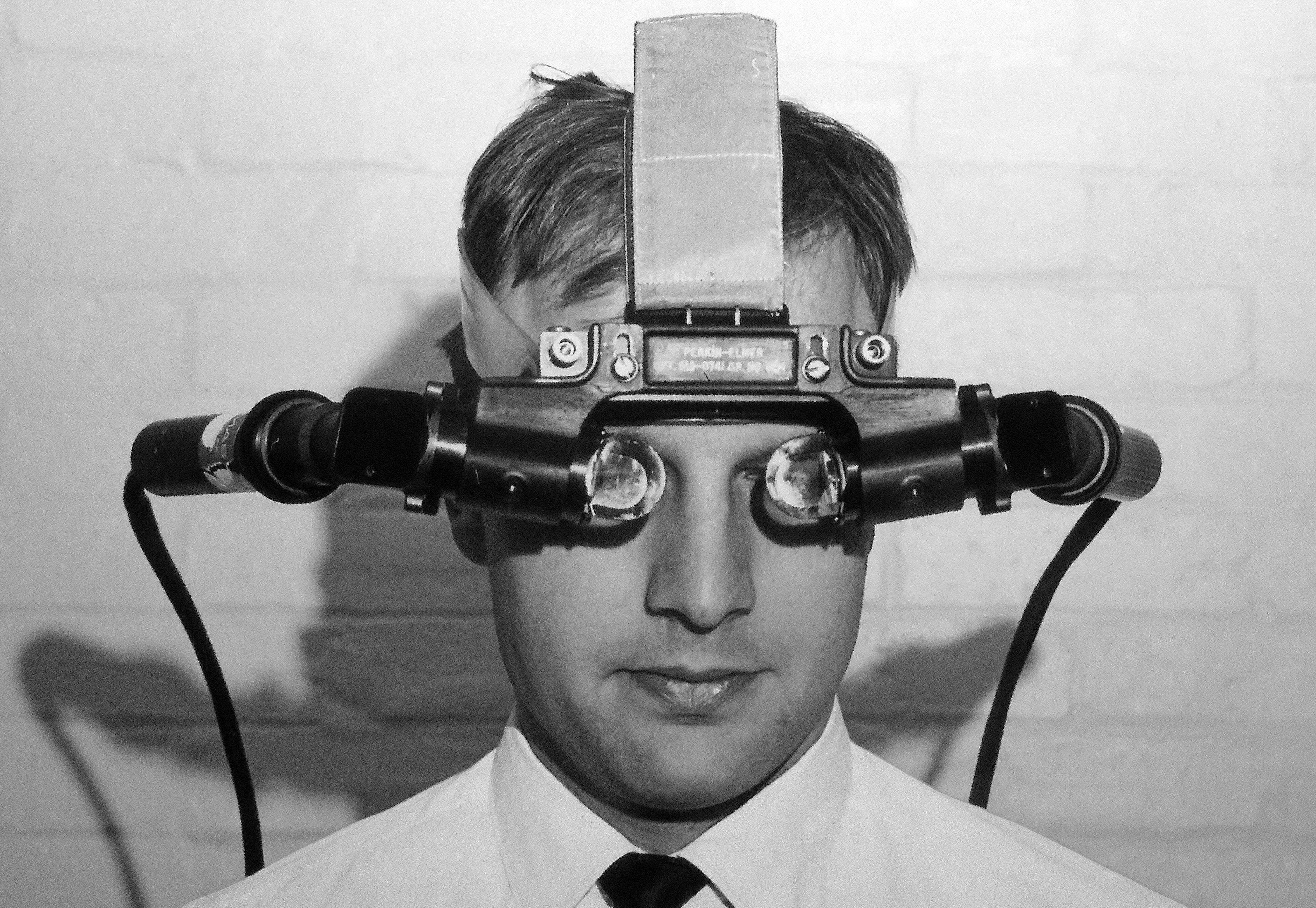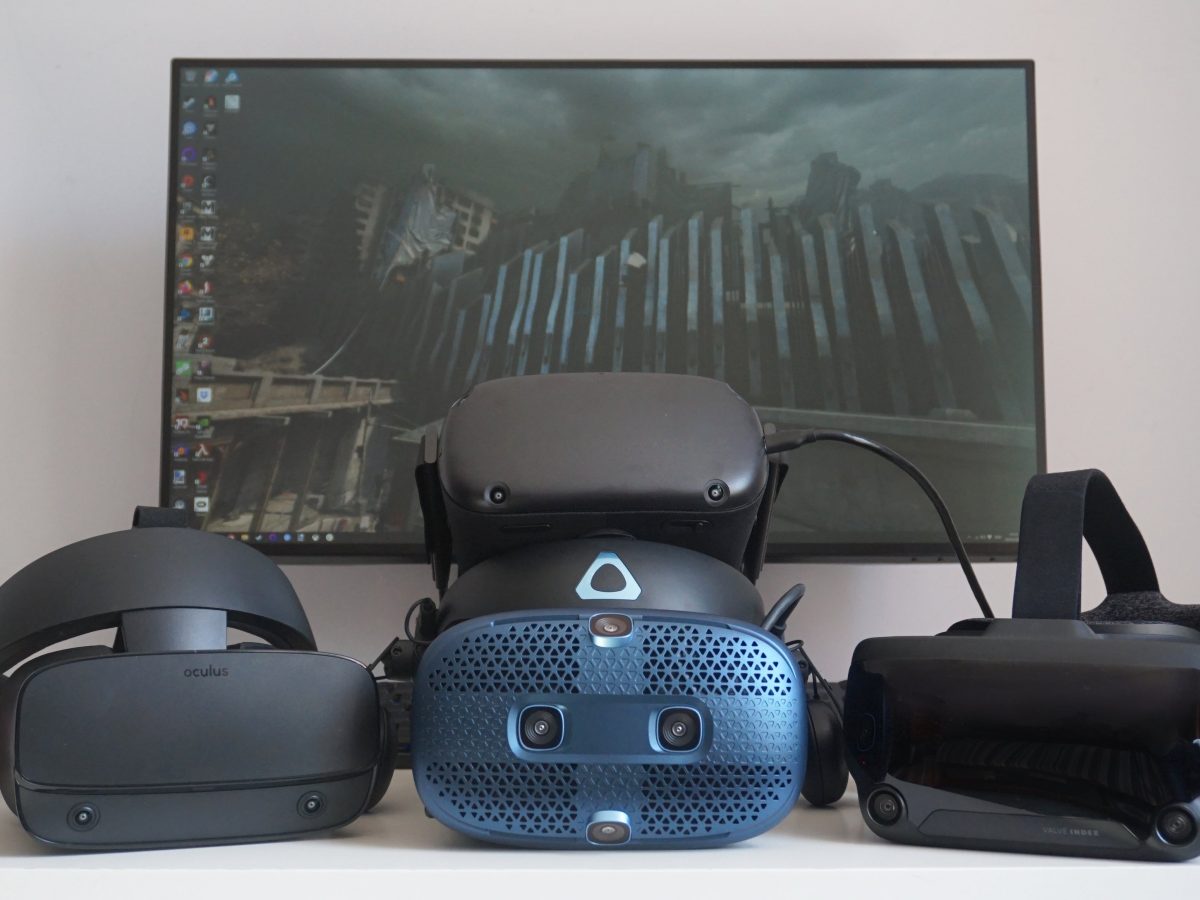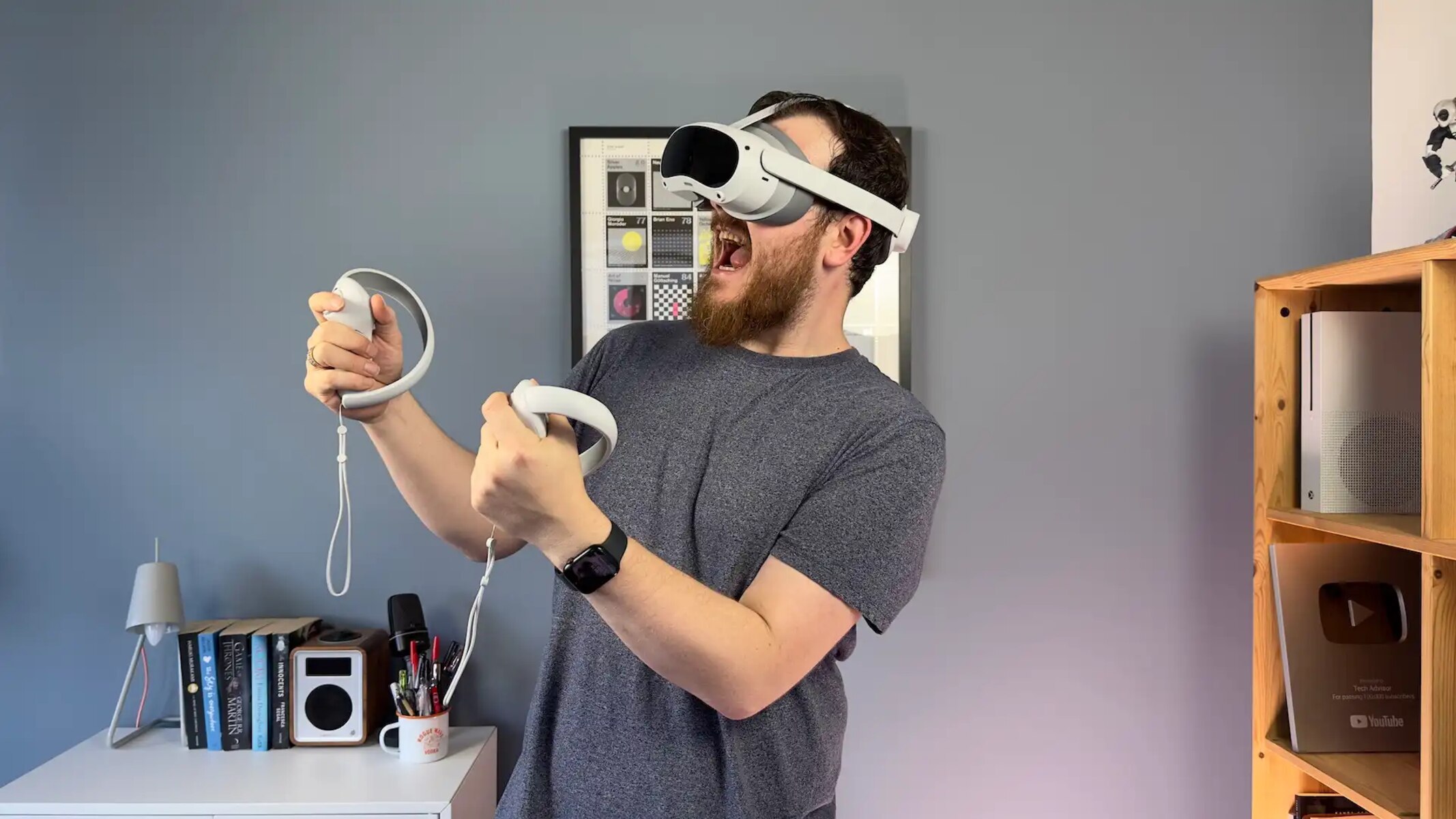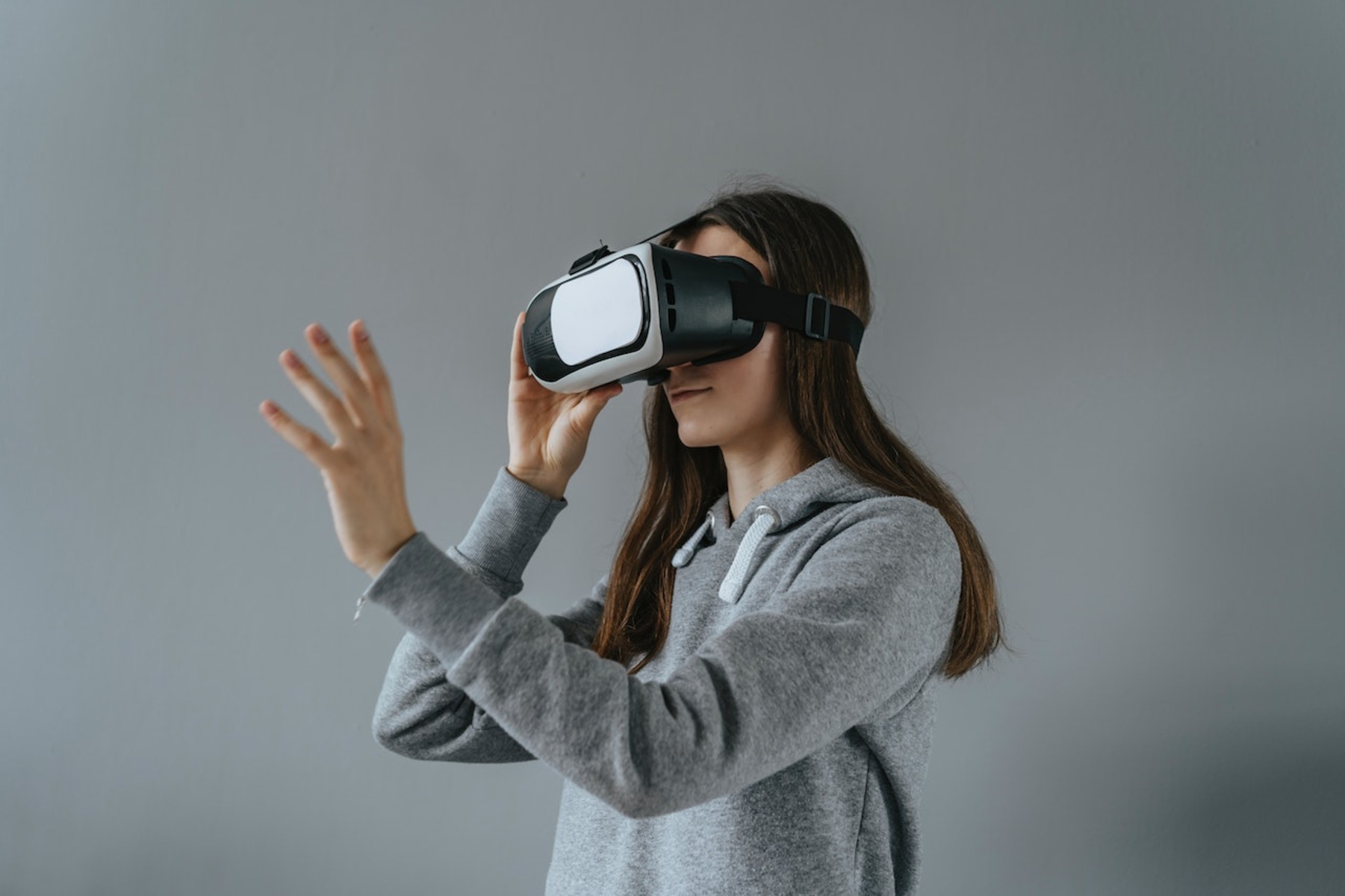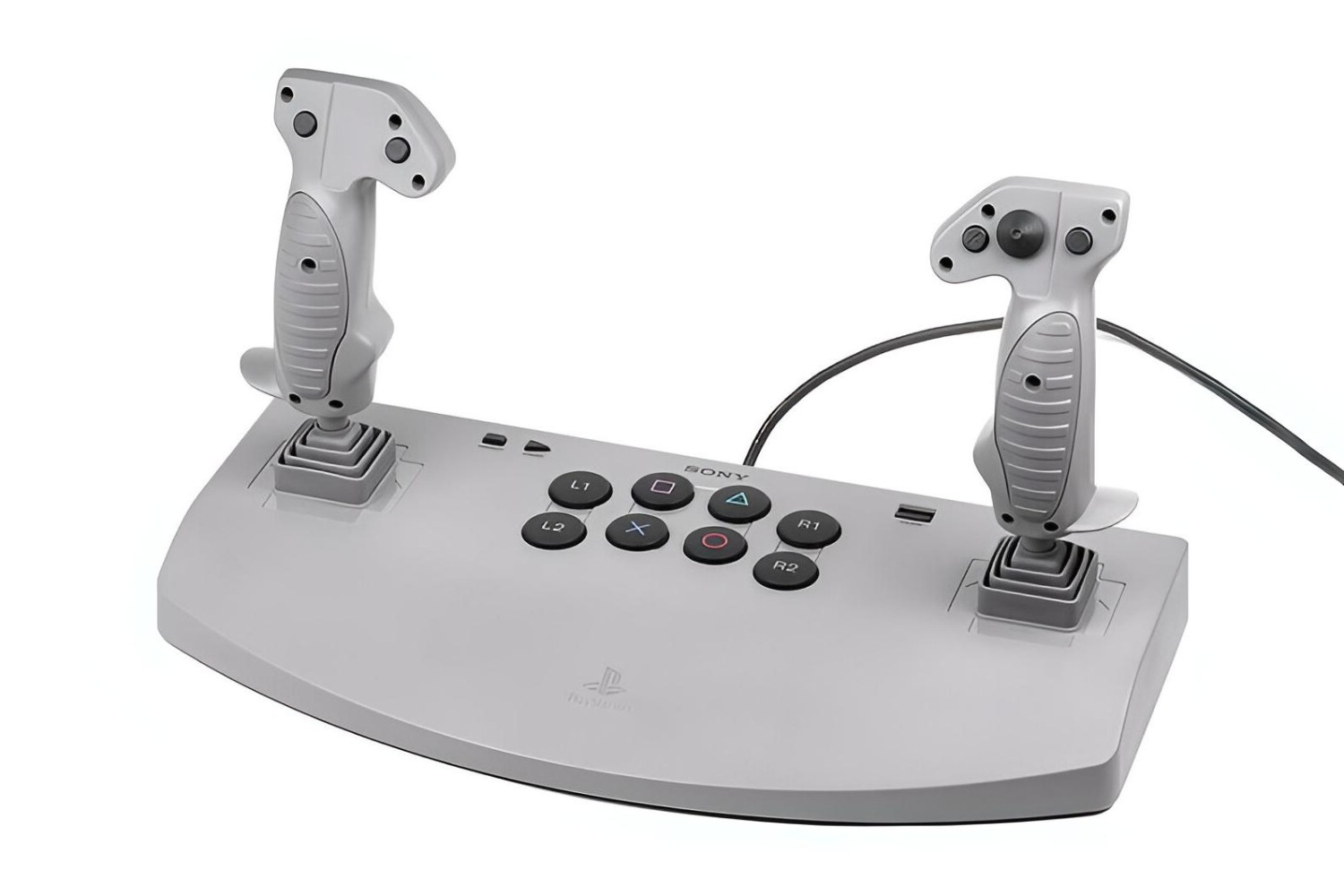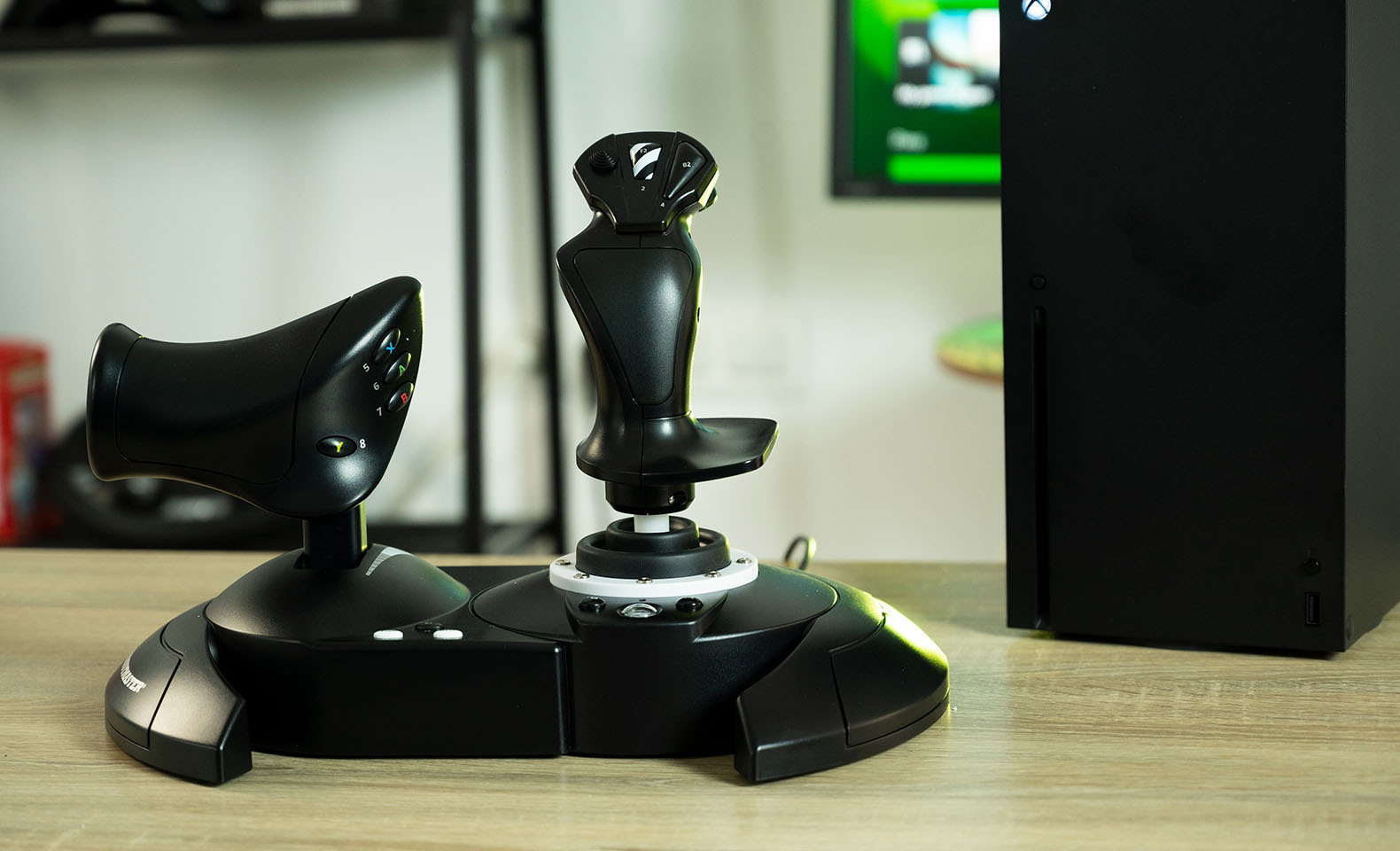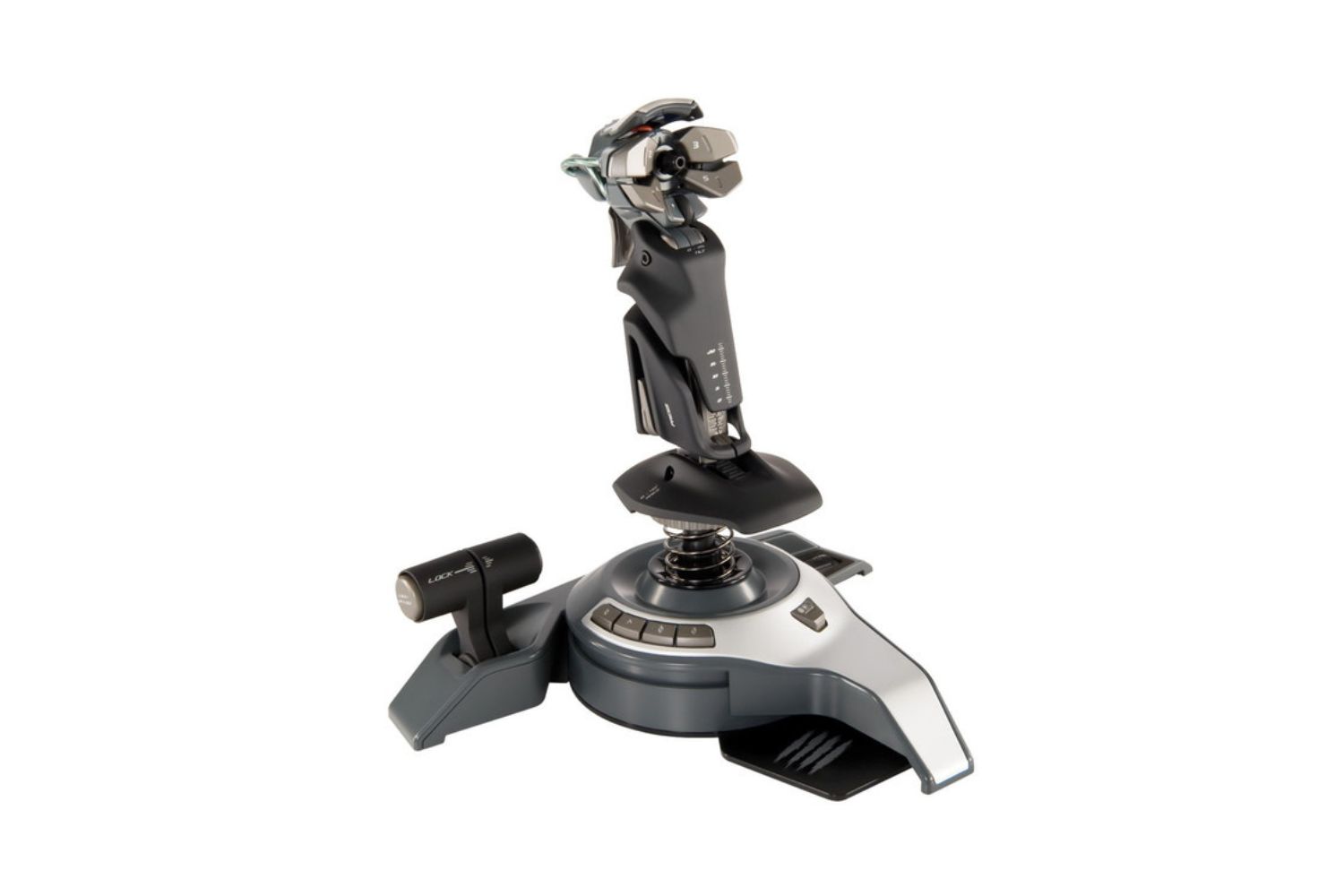Introduction
Introduction
Welcome to the exciting world of virtual reality (VR) flight simulation! If you’re a fan of flight games and have a passion for immersive experiences, then combining the HTC Vive with a flight stick can take your gaming adventures to new heights. The HTC Vive offers an unparalleled VR experience, allowing you to step into a virtual cockpit and soar through the skies with astonishing realism. When paired with a flight stick, the Vive enables you to control your aircraft with precision, adding a whole new dimension to your gaming escapades.
Whether you’re a seasoned virtual pilot or a newcomer to the world of VR flight simulation, this guide will walk you through the process of setting up your HTC Vive and flight stick for an optimal gaming experience. From configuring the hardware to fine-tuning the settings for popular flight simulation games, you’ll learn how to harness the full potential of this dynamic duo.
So, fasten your seatbelt, adjust your headset, and prepare for an exhilarating journey as we delve into the exhilarating realm of VR flight simulation with the HTC Vive and a flight stick!
Setting up the Vive and Flight Stick
Setting up the Vive and Flight Stick
Before embarking on your virtual aviation adventures, it’s essential to ensure that both your HTC Vive and flight stick are properly set up and ready for action. Here’s a step-by-step guide to get you started:
- Prepare the HTC Vive: Begin by setting up your HTC Vive headset according to the manufacturer’s instructions. This typically involves connecting the headset to your PC, installing the necessary software, and configuring the room-scale VR setup for an immersive experience.
- Calibrate the Flight Stick: Next, unpack your flight stick and connect it to your computer. Many flight sticks come with their own software for calibration and customization. Follow the provided instructions to ensure that the flight stick is properly calibrated and ready for use.
- Positioning and Connectivity: Find a suitable location for your VR setup, ensuring that there’s enough space for you to move around comfortably while wearing the Vive headset. Additionally, position your flight stick in a convenient and ergonomic location, allowing for easy access and maneuverability during gameplay. Ensure that all necessary cables are connected securely to your PC.
- Software Installation: Install any required drivers or software for your flight stick, as well as the VR platform you’ll be using for flight simulation. This may include SteamVR, Oculus software, or other VR platforms compatible with the HTC Vive.
- Integration: Once both the HTC Vive and flight stick are set up and connected, ensure that they are integrated seamlessly with your gaming system. Test the functionality of the flight stick within the VR environment to confirm that it’s responding accurately to your inputs.
With these essential setup steps completed, you’re now ready to dive into the exhilarating world of VR flight simulation, where you’ll have the freedom to take to the virtual skies with the immersive realism provided by the HTC Vive and the precision control of your flight stick.
Configuring the Vive and Flight Stick for Flight Simulation Games
Configuring the Vive and Flight Stick for Flight Simulation Games
Now that your HTC Vive and flight stick are set up, it’s time to optimize their performance for an unparalleled flight simulation experience. Here’s how you can configure the Vive and flight stick to seamlessly integrate with popular flight simulation games:
- Game Compatibility: Ensure that the flight simulation game you intend to play is compatible with VR and supports the use of a flight stick. Many popular flight simulation titles, such as Microsoft Flight Simulator and X-Plane, offer VR support and customizable control options for flight sticks.
- Control Mapping: Access the settings or options menu within the flight simulation game to configure the input settings for your flight stick. This typically involves mapping the various flight controls, such as the yoke, throttle, rudder pedals, and buttons, to the corresponding inputs on your flight stick. Take the time to customize the controls to match your preferred flying style and comfort level.
- VR Calibration: Within the VR settings of the game, calibrate the VR headset to ensure optimal tracking and alignment. This step is crucial for maintaining a smooth and immersive VR experience while using the HTC Vive in conjunction with the flight stick.
- Graphics and Performance: Adjust the graphics and performance settings of the flight simulation game to optimize the visual quality and frame rate for VR gameplay. Balancing graphical fidelity with smooth performance is essential for a captivating and comfortable VR flight experience.
- Test and Fine-Tune: Before taking to the virtual skies, spend some time in a practice environment to test the configured settings. Use this opportunity to fine-tune the sensitivity and responsiveness of the flight stick to match your preferences, ensuring that the controls feel natural and intuitive during gameplay.
By carefully configuring the HTC Vive and flight stick for your chosen flight simulation game, you can elevate your gaming experience to new heights, immersing yourself in the captivating world of virtual aviation with unparalleled realism and control.
Tips for Using Vive and Flight Stick Together
Tips for Using Vive and Flight Stick Together
As you embark on your VR flight simulation journey with the HTC Vive and a flight stick, consider the following tips to enhance your overall experience and make the most of this dynamic combination:
- Optimize Your Play Space: Ensure that your VR play area is free from obstacles and hazards, allowing you to move around safely while fully immersed in the virtual cockpit. Clearing the play space of furniture and other obstructions can prevent accidental collisions while using the flight stick and VR headset.
- Practice Patience and Precision: Mastering the art of flying with a flight stick in VR may require some practice and patience. Take the time to familiarize yourself with the unique sensation of controlling an aircraft using the flight stick, and gradually refine your piloting skills to achieve precision and finesse in your maneuvers.
- Experiment with Control Sensitivity: Explore the control sensitivity settings within your flight simulation game to find the optimal balance that suits your piloting style. Adjusting the sensitivity of the flight stick can significantly impact the responsiveness of the aircraft, allowing you to tailor the controls to your preferences for a more personalized and enjoyable experience.
- Immerse Yourself in VR Audio: Invest in a quality pair of headphones or VR audio solution to complement the immersive visuals of the HTC Vive. The spatial audio and realistic sound effects can enhance the sense of presence and immersion, further drawing you into the captivating world of virtual aviation.
- Engage with Community Resources: Join online forums, VR communities, and flight simulation groups to connect with fellow virtual pilots. Sharing experiences, tips, and tricks with other enthusiasts can enrich your VR flight simulation journey and provide valuable insights into optimizing the use of the HTC Vive and flight stick.
By incorporating these tips into your VR flight simulation endeavors, you can elevate your overall enjoyment and proficiency in using the HTC Vive and flight stick together, unlocking the full potential of this exhilarating gaming combination.
Conclusion
Conclusion
Embarking on virtual aviation adventures with the HTC Vive and a flight stick opens up a world of immersive possibilities for flight simulation enthusiasts. By combining the cutting-edge VR technology of the HTC Vive with the precision control of a flight stick, gamers can experience the thrill of piloting aircraft with unparalleled realism and engagement. As you navigate the virtual skies, the seamless integration of the Vive and flight stick enhances the sense of presence and control, allowing you to truly feel like a skilled aviator soaring through captivating landscapes and challenging flight scenarios.
From the initial setup and calibration of the HTC Vive and flight stick to the fine-tuning of controls and the exploration of VR-compatible flight simulation games, this guide has provided valuable insights into optimizing the use of these dynamic gaming peripherals. By carefully configuring the VR and control settings, as well as incorporating tips for an enhanced VR flight experience, gamers can elevate their virtual piloting skills and immerse themselves in the captivating world of virtual aviation.
As you continue to explore the boundless horizons of VR flight simulation, remember to embrace the journey with patience and determination. Mastering the art of virtual aviation with the HTC Vive and a flight stick may present challenges, but the rewards of achieving seamless control and breathtaking immersion are well worth the effort. Whether you soar through clear skies, navigate challenging weather conditions, or engage in thrilling aerial maneuvers, the combination of the HTC Vive and a flight stick offers an exhilarating and unforgettable gaming experience.
So, with your VR headset donned and your flight stick in hand, prepare to embark on countless adventures in the virtual realm, where the skies are limitless and the joy of flight knows no bounds. May your virtual flights be filled with excitement, skillful piloting, and the awe-inspiring sensation of being at the helm of a virtual aircraft, all made possible by the remarkable fusion of the HTC Vive and a flight stick.







